There was a popular rumor that Samsung’s SmartThings was ready to be shut down completely. This turned out to be only partially correct. Samsung chose to maintain manufacturing software and yet no longer create hardware under its name, therefore the Hub’s production was transferred to Aeotec, as well as the Aeotec Smart Home Hub was born.
The Aeotec Smart Home Hub works with Z-Wave & Zigbee devices and therefore is managed by the SmartThings software, just like the SmartThings V3 Hub.
What you will see here?
Price and release date
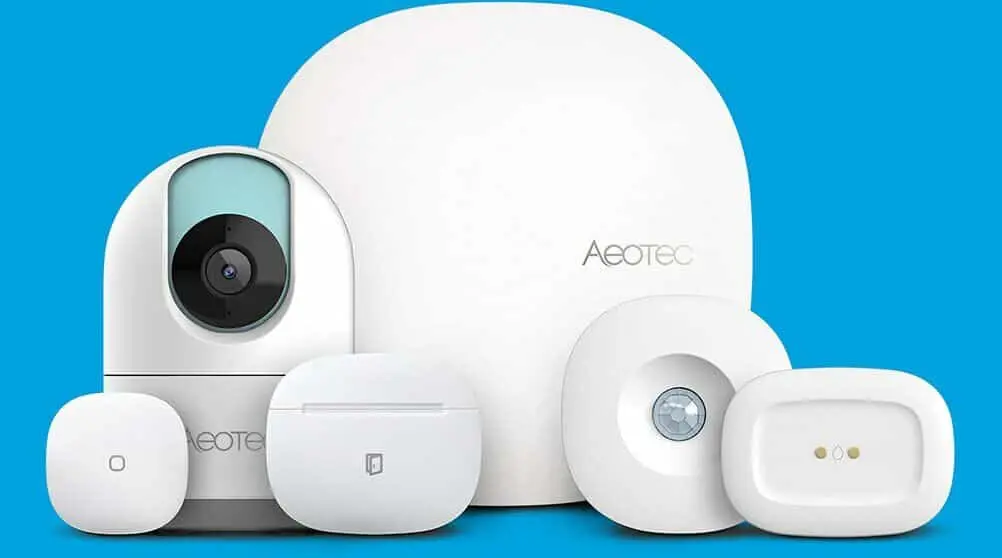
This Aeotec Smart Home Hub went on sale for the first time in January 2021. It costs $134 and can be found on
Design
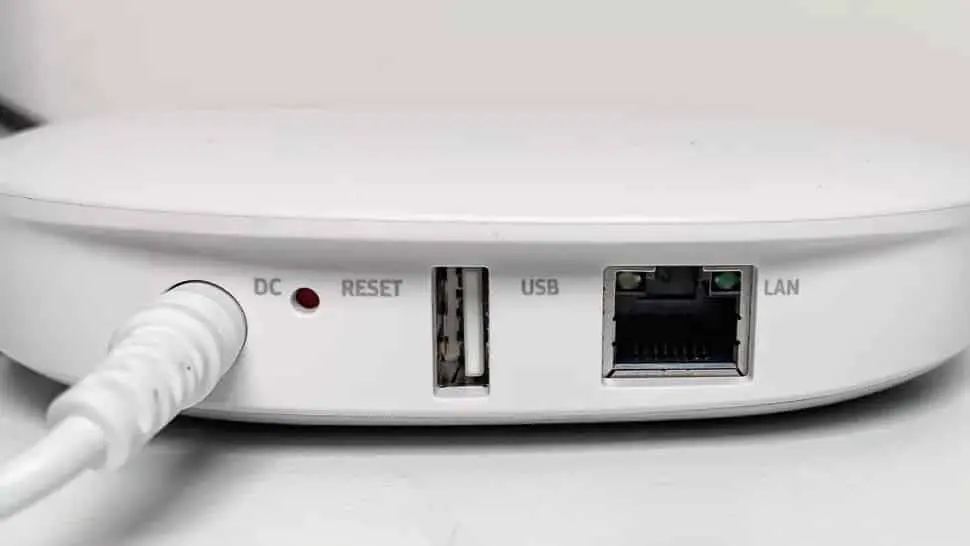
The Aeotec hub is similar to the now-defunct Samsung hub. The square is circular and is 5 x 5 x 1.2 inches. The top, sides, and bottom are all white, with a light grey bottom. Samsung also makes a power plug that goes with the hub.
An Ethernet port, a USB connection, and a power port are located on the device’s back. The USB port on the Aeotec hub is worthless unless you need to debug any difficulties with the hub.
Prepare to put in some effort if you’re upgrading from such an older hub. To manually reconnect all of your smart homes gadgets to the Aeotec Hub, first, delete the older devices from the SmartThings app. This can take a little time if you’re like me and also have a lot of devices. If you’re upgrading from the SmartThings v3 hub or v2, though, Samsung can assist you. Log into your SmartThings account after trying to set up your Aeotec hub, make a note of the Hub ID both for your SmartThings and Aeotec hubs, and email SmartThings customer service at support@smartthings.com to start the process.
Features
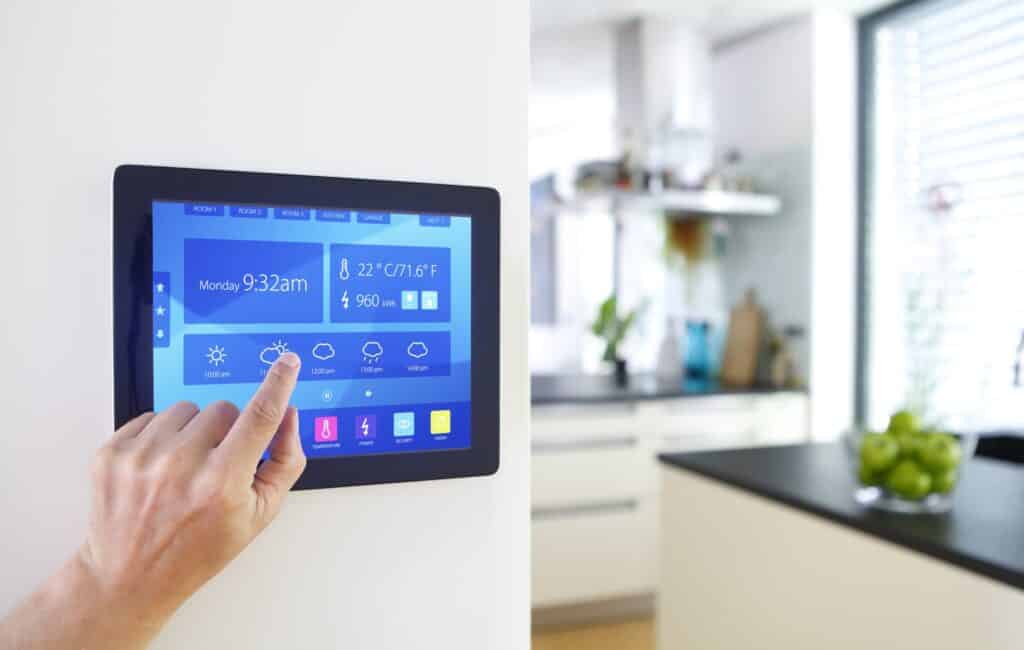
- Monitor and control connected devices via App
- Receive notifications of status changes of connected sensors
- Automate personal routines
- Compatible with Google Assistant and
Amazon Alexa - Supports Zigbee 3.0, Z-Wave, WiFi
- Power Supply: 5V, 2A power adapter (Type G plug)
The Aeotec smart home hub, like some other smart home hubs, isn’t particularly useful. That is, it acts as a hub between Zigbee & Z-Wave devices, however, the intelligence is handled by the SmartThings platform.
SmartThings does not require a hub because it connects several devices via cloud accounts. You’ll need a hub if you have a Yale Conexis L1 smart lock, which links to SmartThings through the optional Z-Wave module; but, if you’re a newer Yale Linus lock, which communicates to SmartThings via the web, you won’t need one.
The majority of well-known brands enable SmartThings to do so over the cloud. This may be seen in Nest (doorbells, cameras, and thermostats), Ring (doorbells and cameras), and Arlo (cameras and doorbells).
It’s all controlled through an app, which allows you to group gadgets into rooms and govern each product as needed, such as locking and unlocking smart locks, changing the color of lighting fixtures, and so on.
So, what exactly is the hub’s significance? Sensors and remote controls, on the other hand, are perfect for Z-Wave and Zigbee devices since they can function for years on a single spare battery, providing the fundamentals for a smart home.
Sensors
Aeotec produces a huge number of SmartThings-compatible devices, so there are plenty to choose from. Sensors can be used to generate some pretty sophisticated rules. If the motion isn’t detected in a space for a particular amount of time, for example, you can have your Tint lights & Sonos player switch off automatically. A light can be turned on by an entrance sensor, for example.
Drawbacks.
One is that systems are known aren’t universal, which is true of every smart platform. You’ll almost probably use one or more platforms if you want to do something (HomeKit, IFTTT, via Homebridge, and so on).
For example, I have Homebridge set up so when my Yale Conexis L1 opens using HomeKit, it immediately stops my Ring Alarm.
Because third-party Ring integration for SmartThings is difficult to set up, I’m compelled to use two platforms to do the same goal.
Second,
If you link Hue lights to SmartThings, it will appear in Alexa twice: first under the Tint Skill and again under the SmartThings Skill.
Interface
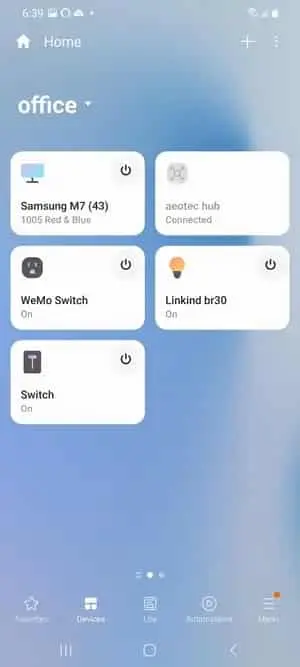
The SmartThings app is used to control everything because Aeotec’s hub is intended to interact with SmartThings.
The app’s main screen displays a sequence of cards, which each symbolizes a smart home device that is linked. Each card includes the device’s name, an icon that illustrates it (such as a lightbulb), and a button to switch it on or off. The card would be greyed out if the device is switched off. It’s obvious at a glance. A thumbnail may appear on the screen if you have a home automation security camera. By tapping on these cards, you’ll be taken to a submenu with additional device controls. If the gadget in question is indeed a lightbulb, for example, you’ll be able to dim it as well as change its color.
You could see your devices sorted by room by selecting the Devices option just at bottom of the screen. You’ll see a menu where you may connect devices to SmartThings if you tap the Plus icon at the top of the Home screen. You also can build Scenes and Routines here, and this is where the app’s true power lies.
Scenes and Routines

You may design a set of actions for your smart home products using Scenes and Routines. The key distinction is that Scenes must be explicitly activated, whereas Routines are automatically triggered based on parameters you specify. Even for newcomers, the SmartThings app offers a very straightforward If-Then setup that is quite easy to follow.
SmartThings is similar to
SmartThings has a SmartThings Labs section where you may experiment with new features. “No concerns while away,”. For example, is a feature that turns your linked lights on & off at random while you’re away. It’s excellent to see it here, too, because it’s a feature included in some of the greatest smart lights and smart light switches.
Smart Home Compatibility
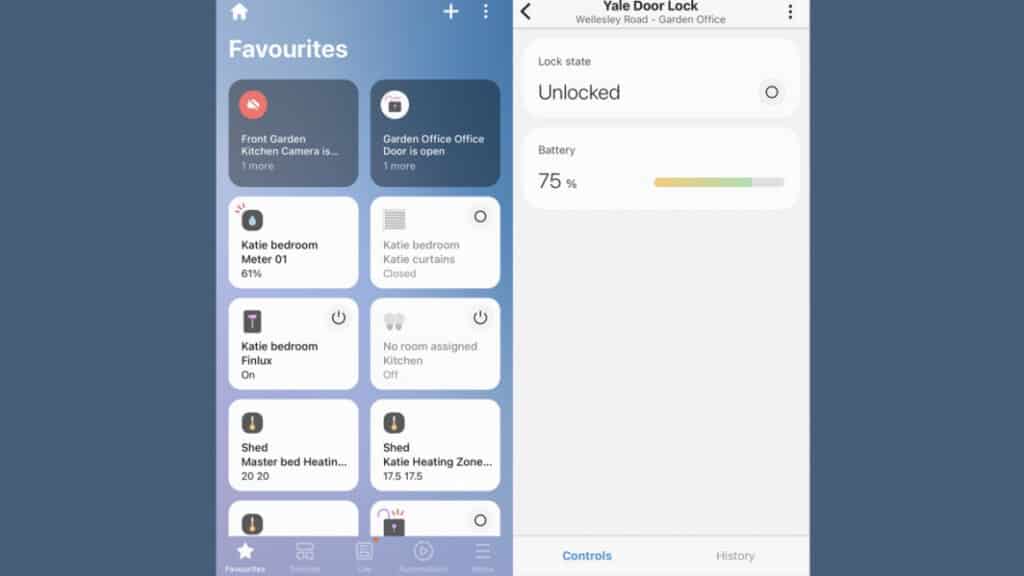
The Aeotec hub will operate all Zigbee, Z-Wave, & Wi-Fi smart home devices, just like the SmartThings hub. When the Matter smart home standard gets ready, a corporate official indicated the company will collaborate with it. You can also use Google Assistant and Alexa to control it, but not HomeKit.
Anything and everything that works with Samsung SmartThings hub should function with Aeotec’s, which is a huge list. The brand includes that is Philips Hue, Arlo, August, GE, Ring, Sonos, and Yale. There’s a fair probability that at least some of the best smart locks, best video doorbells, best smart light switches, and other smart home areas will function with SmartThings. LG and Sony aren’t present, and GE’s smart switch and outlet solutions are minimal.
SmartThings works with some, but not all, Nest products. This was not functional with some of Nest’s newest devices. Includes the Nest Protect, Nest Doorbell (battery), and Nest Cam (battery) .
Conclusion
One of the greatest smart home hubs is indeed the Aeotec Smart Home Hub. It is also to a lesser extent, Samsung’s SmartThings platform. The Aeotec hub can connect to both Z-Wave and Zigbee gadgets, and its automation is usually more advanced than Alexa’s. Those who are more committed to Alexa’s ecosystem might pick the
Read more:
- Use the Workout app on Apple Watch- Keep track of your exercise routine!
- Google Nest Hub Max : Get the all rounder Hub
- The ultimate guide to HomeKit hubs- Everything you need to know!
- Smart speaker 2025: which one should you buy
- Best Google Assistant compatible devices for your smart homes!
















